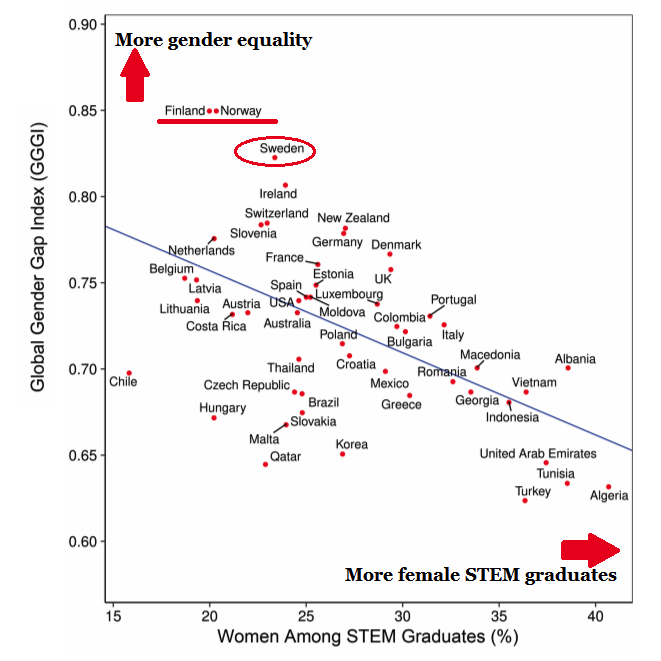Well, now that’s an inconvenient truth.™

From the research paper’s introduction:
We found that countries with high levels of gender equality have some of the largest STEM gaps in secondary and tertiary education;we call this theeducational-gender-equality paradox. For example, Finland excels in gender equality, its adolescent girls outperform boys in science literacy, and it ranks second in European educational performance. With these high levels of educational performance and overall gender equality, Finland is poised to close the STEM gender gap. Yet, paradoxically, Finland has one of the world’s largest gender gaps in college degrees in STEM fields, and Norway and Sweden (see those three countries on the chart above), also leading in gender-equality rankings, are not far behind (fewer than 25% of STEM graduates are women).We will show that this pattern extends throughout the world, whereby the graduation gap in STEM increases with increasing levels of gender equality.
Via MJP